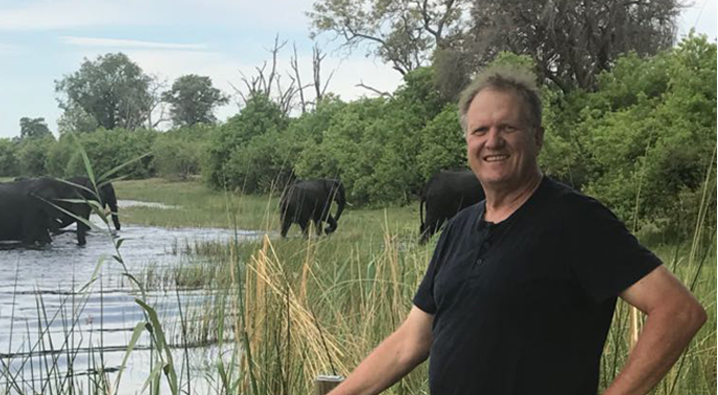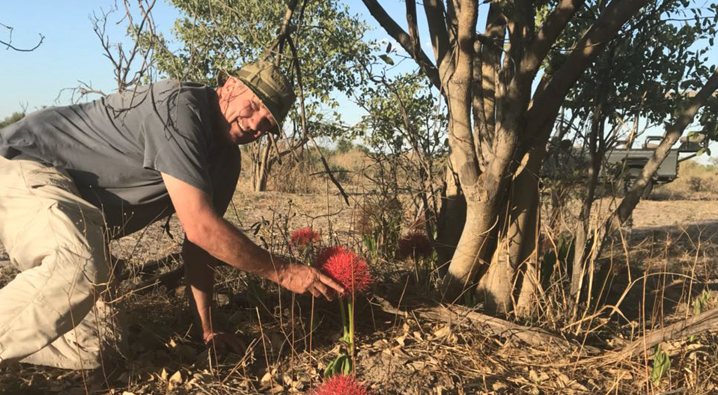Riaan Van Zyl – Consulting and contracting Arborist's Pty(Ltd)
Riaan van Zyl
Riaan was born in Zambia on a frontier copper mining town called Mufelira – From an early age he was exposed to the natural environment with the then intact sub-tropical forest around the town - sadly now diminished due to uncontrolled tree felling for charcoal making and farming. As an 8 year old his family moved back to SA to yet another frontier village – Phalaborwa as stone throw away from the Kruger Park. On arrival in Phalaborwa they were met with elephants roaming on the school rugby fields, hyenas catching town folk's dogs and hunters showing off lions shot which were eating the cattle on surrounding cattle farms. Living 1 km from the unfenced Kruger Park gave rise to the spirit of exploring and discovering new places in the bush and every day like clockwork he walked with his dog and enjoyed the undisturbed nature in the Lowveld heat. It was the cool micro-climates surrounding small perennial streams which he noticed and was attracted to. They were all surrounded by trees – it was at 10 years old he discovered how the trees make a difference to our world.
The large Mopani outside his bedroom window was the first thing he woke up to each morning – The challenge of climbing the Mopani tree the seasonal changes, the arrival of the Mopani moth and the edible worms not much later devouring extra ordinary butterfly looking leaves and then the even stranger seeds which looked like brain tissue when opened. Then there was the Maroela and the large Leadwood next to the house which either gave access to the roof or fast but not so safe route down for the young lad. Trees were from and early age a passion and a love – the variety and the differences of each tree species spoke to him as he met them over time.
When choosing a career the obvious direction was forestry – the great outdoors – and a university in the distant Western Cape – Stellenbosch. He graduated with a B. Sc in Conservation Forestry and unsure of working for a boss he took on his first job albeit only for six months as an Urban Forester for the then Cape Town Regional Services Council – The idea of caring for trees in an environment outside their natural habitat interested him. These trees which were within the Urban environment and removed from nature due to their placement in the managed urban landscape developed his interest to care for them and enhance trees possibility to improve the environment and so the quality of live for humans where they lived and worked. For this he knew they would need special care to be successful.
He left South Africa in the mid eighties to study Rural Development combining forestry and food production at a School in Sussex England called Emerson College. This is where he met alternative agriculture practices and learn about an organic way of thinking – He read Rachael Carlson's Silent Spring and Schumacher's Small is beautiful and Masanobu Fukuaka's One straw revolution – He travelled across America after his studies and entered an apprenticeship in America with an Arborist Charlie Hyatt. For the rest of his stay in America he hitched rides across America to the San Juan islands on the West Coast and back via Canada to Toronto.
He was now set-up for a life time of work in the alternative fields of agriculture and forestry which also questioned the conventional thinking in social practices, economics, environmental management and education. He met and worked for Wendy Cook in Mallorca on a Forestry Farm – and it was there that he met his life time companion best friend and wife Helen Cremin. They fell in love and a year later she came to SA for a sabbatical where she still remains – The passion for development of a society alternative to Newtonian and Darwinian thinking which he found one sided, defeatist and unacceptable to develop a healthy society. This led Helen with Riaan in support to start a Waldorf School in Stellenbosch where all three their children were schooled – Clara Maria and Adriaan. The passion for something new and finding the next solution or building block was a great aid in developing and growing his business in Arboriculture, Conservation and Urban Forestry in South Africa.
Arboriculture and urban forestry was a reality and field of study for 100 years by then in Europe and America. Worldwide the default position of custodians of trees and forests were that they are from nature and can be left alone undisturbed forever and as intended by nature. But as urbanisation, city densification increased, pollution, carbon, oceans of plastic, climate change and drought started impacting on people the need for trees and forests was back on the agenda as a way to mitigate our environmental problems. In a world where humans have become emancipated from nature the opportunity again arrived to connect trees and humans. By committing to the path of educating and building awareness for the need of trees – by promoting tree and forest values in landscape, their environmental functionality, socio – economic contributions and the signature they leave of past - and for future generations in terms of culture and history are moral considerations we all strive for but so often fail in recognising protecting or developing.
Riaan currently runs his work with a dedicated team of trained professionals. He has the privilege of owning RVZ consulting and Contracting in Arborists Pty (Ltd) from Stellenbosch and is the initiator and co-owner of Tree and Forest Botswana where work is done to promote trees around camps and in concession areas where elephants are often in conflict with people. He is a director of Woodford Truffles and takes responsibility for the plantation management and contributes his services to a civil organisation TreeKeepers working to save trees in the City of Cape Town. He has led the development of the first tree inventory programs and urban forestry management plans in South Africa and is on the leading edge in using drone imagery and similar surveys.




